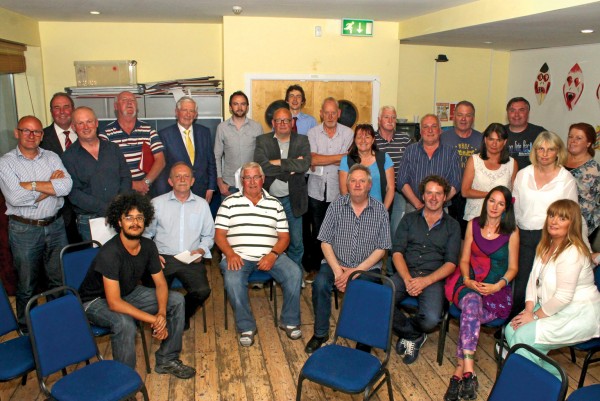
The latest meeting of the Our Town Ringsend/Irishtown project took place in the first week of July at the RICC. Seeking to retain the momentum from the previous week’s visit by Belfast community activist Jackie Redpath (see the special report on NewsFour.ie 30/6/14) the purpose of this summer meeting was to refresh the memories of previous participants, and introduce new people to the insights that had been developed so far.
The overall aim of the Our Town initiative – spearheaded by architect Felim Dunne, landscaper and broadcaster Diarmuid Gavin, and Padraic White, a founding member of the Irish Development Authority and Chairman of the Northside Partnership Programme – is to restore prestige to the Ringsend and Irishtown area, tackle social problems with voluntary action, and regenerate the environment physically and economically.
Since the first meeting of 2014 in January, six core areas have been identified for action; Education, Work, Sport, Social Exclusion/Inclusion, Physical Regeneration and Communication. Another key order of business for this July meeting was to select volunteers who felt they could bring their strengths to these key areas.
The evening opened with a certain lightness of touch. Dylan Clayton of the Ringsend Rock School played a song specially written for the occasion, which was warmly received and set a positive tone.
Some familiar faces were in attendance: Deke McDonald, Boy Murphy, councillors Kevin Humphreys and Dermot Lacey, and Sueann Moore of the Spellman Centre, to mention just a few, all brought together by the urge to restore and develop their neighbourhoods.
Each topic was thoroughly discussed, and two to four volunteers were tasked to an area of their interest, following fair extensive debate. These six groups will explore their topics and what can be done before the first Ringsend Irishtown Community Convention, this October.
Diarmuid Gavin chaired the meeting, speaking of his sense of Ringsend being a “Gateway to Dublin”, and due to its proximity to the mouth of the Liffey, that there is a sense of national affinity with the Docklands’ communities. Research that he brought to the event created a sense of the scope of what could be done: he cited examples such as Bill Strickland, the community activist from Detroit, Michigan, USA, who raised the funding to build a school on neglected industrial land in a city that had fallen far from its prime. “Have a look online for his TED talk,” Diarmuid advised.
Some of the more substantial points seemed to revolve around the importance of long-term thinking – for instance, youth training and upskilling for jobs that are likely to arise in five or 10 years – and breaking from patterns of education and action that may no longer work. The relationship between the community and its new neighbours, the local tech giants, was debated.
Where things go next is a matter determined by the findings of the small versatile volunteer groups that were established. Strategy is in play, now comes tactics. Some problems will be more easily solved than others, but as was observed multiple times on the night, the six areas are inter-related, and maybe each presents possible solutions to the others’ problems.
Main picture: A group shot of those who attended the Our Town meeting.
Below: Diarmuid Gavin goes through the points made at the previous Our Town meeting.
By Rúairí Conneely

